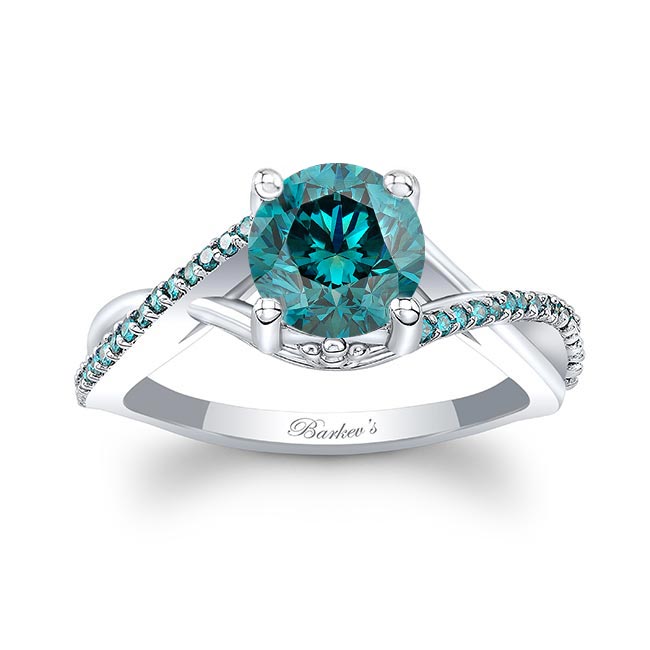The most expensive blue diamond ever sold was a 14.2-carat fancy vivid blue diamond, which sold for $57.5 million in 2016. That’s an astonishing $3.9 million per carat! This goes to show how expensive blue diamond can be.
This gemstone is also among the rarest in the world. It has a captivating blue color that comes from the presence of boron impurities in its carbon structure.
Blue diamonds are sourced from only a handful of mines globally. Primarily, the Cullinan mine near Pretoria in South Africa and the Argyle mine in Australia. Historically, the renowned Golconda mine in India also produced blue diamonds.
But what makes it so expensive and worth investing in? This blog post explores everything you need to know about the value of blue diamonds. Keep reading to discover what you can expect to pay for a blue diamond ring in 2023.
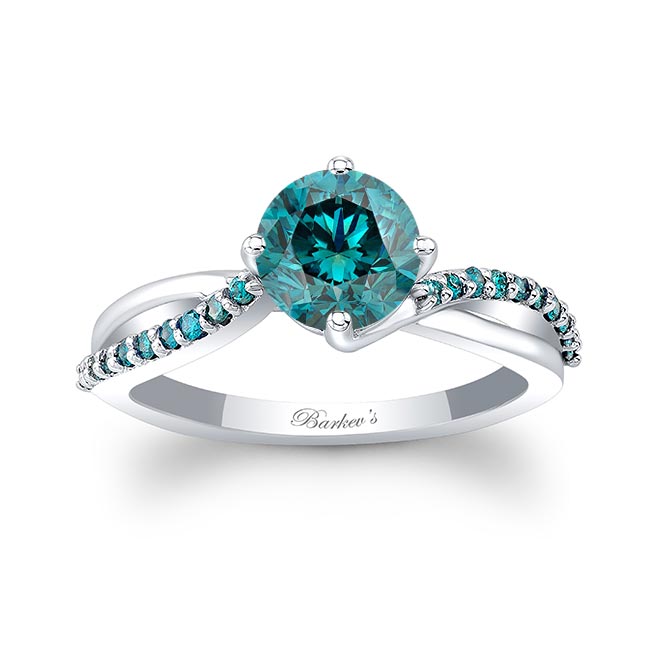
What Makes Blue Diamonds So Valuable?
One of the main reasons why blue diamonds are so valuable is their unique and attractive color. They belong to a subcategory called “fancy color diamonds.” This reflects that they possess rare, desirable colors, unlike colorless diamonds.
Their beautiful blue hues originate from trace amounts of boron during formation. Boron atoms replace the occasional carbon atoms, changing the ability of blue diamonds to absorb light.
Instead of transmitting all light wavelengths and dispersing them equally, blue wavelengths are selectively absorbed. This gives blue diamonds their magical and highly illusive color saturation. The color of a blue diamond is graded by the GIA on a scale from Faint to Fancy Deep, with Fancy Vivid being the most valuable.
Another factor that makes blue diamonds valuable is that they’re extremely rare. According to the Gemological Institute of America (GIA), only about one in 10,000 diamonds mined is a naturally fancy color diamond, and only a fraction of those are blue. The annual production of blue diamonds is estimated to be less than 0.1% of the total diamond production.
The high demand and low supply of these types of diamonds also drive up their value. Blue diamonds are sought after by collectors, investors, and jewelry lovers for their beauty and rarity.
However, the supply of blue diamonds is very limited and unpredictable, as they are only found in certain mines that may be depleted or closed at any time. This creates a gap between the demand and the supply of blue diamonds, which drives up their prices.
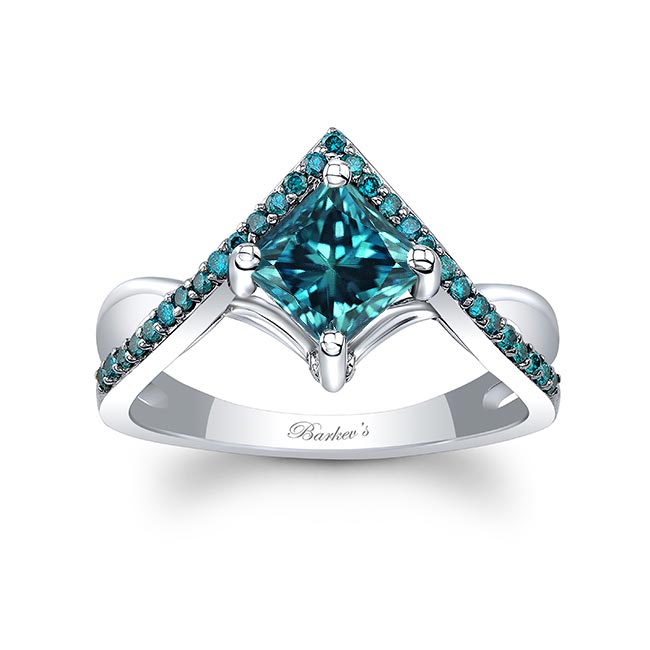
Determining the Value of a Blue Diamond
The value of a blue diamond is determined by four main factors: cut, clarity, color, and carat. These are also known as the 4Cs of diamond grading.
Cut
The cut of a blue diamond refers to how well it is shaped and polished to maximize its brilliance, fire, and scintillation. The cut also affects the perceived color of the diamond, as a well-cut diamond will reflect more light and appear more saturated.
The GIA grades the cut of a round brilliant diamond from Excellent to Poor, based on its proportions, symmetry, and polish. For other shapes, such as princess, cushion, or oval, the GIA only grades the polish and symmetry.
Clarity
The clarity of a blue diamond refers to how free it is from internal and external flaws or inclusions. Inclusions can affect the transparency and durability of the diamond, as well as its color distribution.
The GIA grades the clarity of a blue diamond from Flawless to Included, based on the number, size, location, and visibility of the inclusions under 10x magnification.
Color
The color of a blue diamond is the most important factor that affects its value. As mentioned earlier, the color of a blue diamond is graded by the GIA on a scale from Faint to Fancy Deep, with Fancy Vivid being the most valuable. The color grade is determined by three attributes: hue, saturation, and tone.
Hue refers to the dominant color of the diamond, such as blue, greenish-blue, or grayish-blue. Saturation refers to how intense or pure the color is, from dull to vivid. Tone refers to how light or dark the color is, from light to deep.
Carat
The carat of a diamond refers to its weight and size. One carat equals 0.2 grams or 200 milligrams. The carat of a blue diamond affects its value because larger diamonds are rarer and more desirable than smaller ones.
However, carat is not the only factor that determines the size of a blue diamond; its cut and shape also play a role. For example, a round brilliant diamond will look larger than an oval or marquise diamond of the same carat weight.
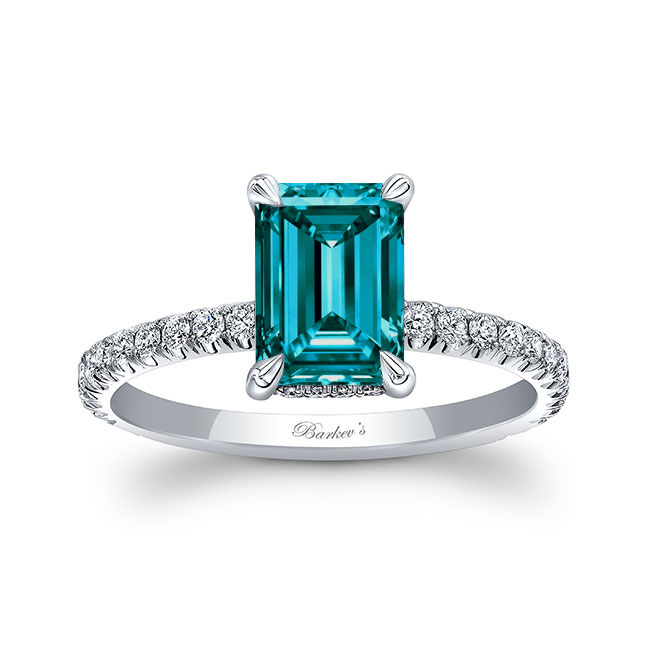
How Much Does a 1-Carat Blue Diamond Cost?
The cost of a one-carat blue diamond varies widely depending on color, clarity, cut, and shape. For example, a one-carat Fancy Vivid Blue diamond with a round brilliant cut and a VS1 clarity can cost up to $1 million. Similarly, a one-carat Fancy Light Blue diamond with a cushion cut and an SI2 clarity can cost as low as $30,000.
To compare, a one-carat white diamond with a D color (the highest grade for white diamonds), an IF clarity (the highest grade for clarity), and an excellent cut can cost around $15,000. On the other hand, a one-carat white diamond with a K color (the lowest grade for white diamonds), an I1 clarity (the lowest grade for clarity), and a GGod cut can cost around $2,000. This shows that blue diamonds are much more expensive than white diamonds of the same carat weight.
Blue diamonds are also more expensive than other naturally colored diamonds, such as pink, yellow, or green. This is because blue diamonds are rarer and more in demand than other colored diamonds.
Factors that increase or decrease the value of a one-carat diamond include:
Quality
The higher the quality of the real diamonds, the higher their value. Quality is determined by the 4Cs of diamond grading: cut, clarity, color, and carat. A blue diamond with a better cut, a higher clarity, a more vivid color, and a larger carat will be more valuable than a blue diamond with a poorer cut, a lower clarity, a less saturated color, and a smaller carat.
Saturation of Color
The more saturated the color of the blue diamond, the higher its value. Saturation refers to how intense or pure the color is. A blue diamond with a vivid or deep color will be more valuable than a blue diamond with a light or faint color. For example, a one-carat Fancy Vivid Blue diamond can cost up to 10 times more than a one-carat Fancy Light Blue diamond.
Prestige of Jeweler or Brand
Leading jewelers like Tiffany, Cartier, and Graff deal extensively in exquisite blues. The name recognition alone means you’ll be paying for valuable jewelry pieces. A blue diamond from a well-known and respected jeweler or brand will be more valuable than a blue diamond from an unknown or less reputable jeweler or brand. For example, a one-carat blue diamond from Tiffany & Co. can cost up to 20% more than a one-carat blue diamond from another jeweler.
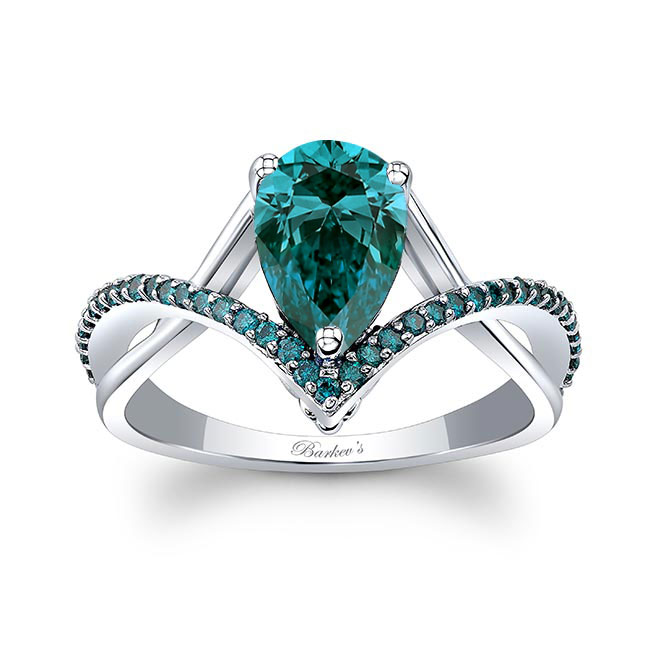
Should You Buy a 1-Carat Blue Diamond Ring?
There are many reasons for buying a prestigious 1-carat blue diamond. For starters, blue diamonds are stunning and eye-catching gems that can make any jewelry piece stand out. If you are drawn to the unique and captivating hue of blue diamonds, you might want to buy a one-carat blue diamond ring to express your personality and style.
Secondly, blue diamond jewelry is perfect for celebrating milestones in your life. Whether it is an engagement, an anniversary, a birthday, or any other occasion that is meaningful to you, a one-carat blue diamond can help you mark the event.
Blue diamonds are among the most rare and valuable types of diamonds in the world. They have shown consistent appreciation in value over the years. This makes them a great alternative investment that can offer long-term returns and security.
Regardless of your motivation for buying a diamond ring, always verify its grading certifications and reports. This will help verify features like clarity proportions, cuts, and color consistency. Once you find the “perfect” blue diamond for you, buying for emotional resonance often proves more satisfying than financial gain alone.
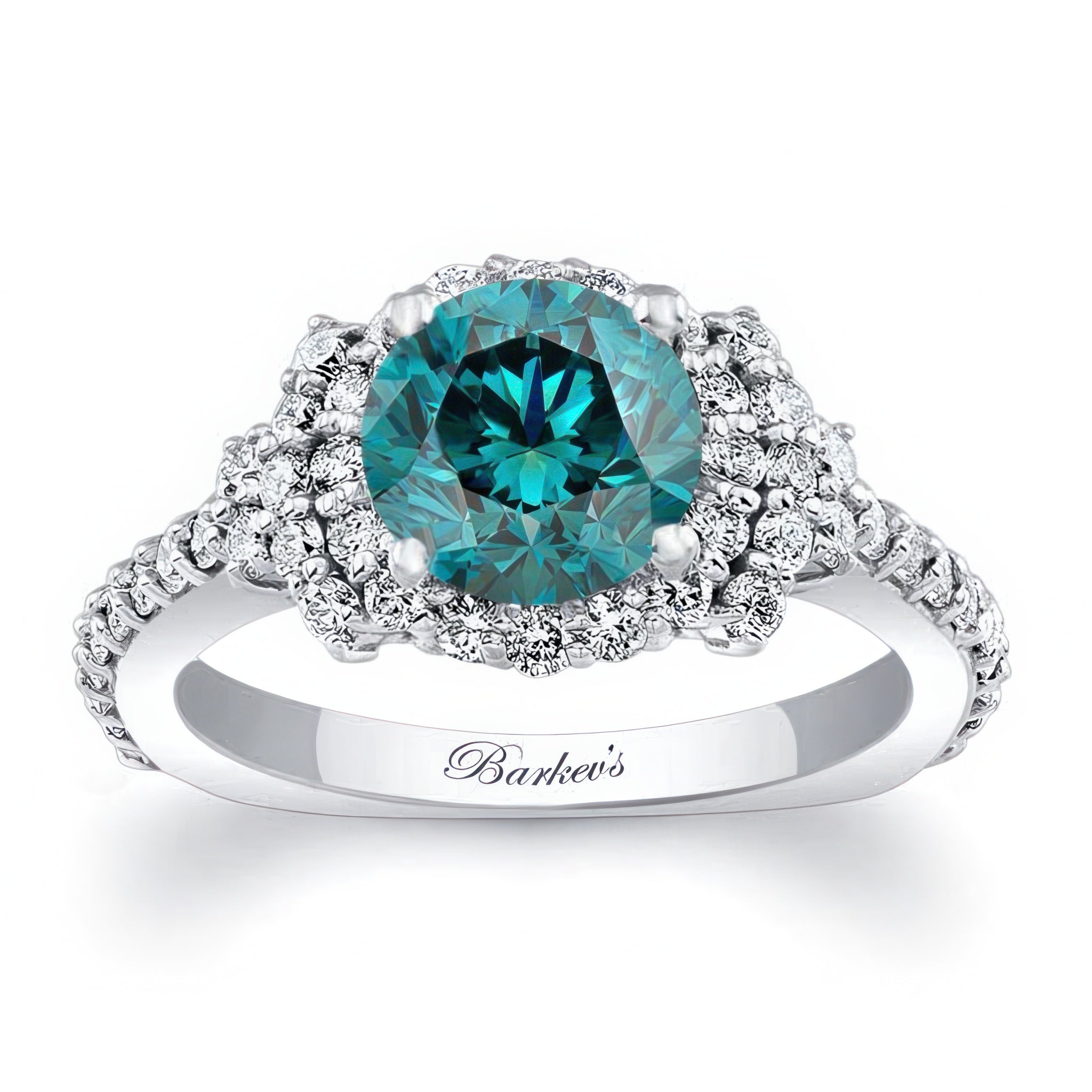
Shop Blue Diamond Rings at Barkev’s
Blue diamonds are among the most beautiful and valuable gemstones in the world. They have a mesmerizing blue color that comes from the presence of boron in their structure. They are also very rare and expensive, especially in larger sizes.
The cost of a one-carat blue diamond can start anywhere from $8500 for synthetic diamonds to $200,000 for mined diamonds. Other factors like color, clarity, cut, and shape will also affect the cost. If you are interested in buying a blue diamond ring, you should consider your budget, preference, and purpose, and compare different options from reliable vendors.
Are you ready to find your dream blue diamond ring? Check out our selection of stunning blue diamond rings at Barkev’s. We offer high-quality blue diamonds in various shapes, settings, and styles. Browse our diamond engagement rings today to find your perfect fit!


